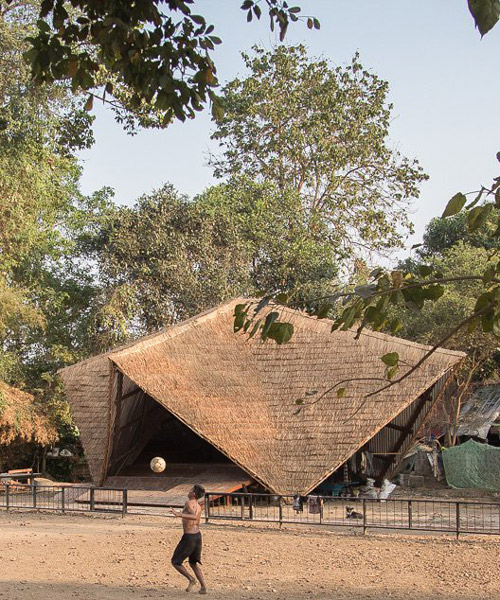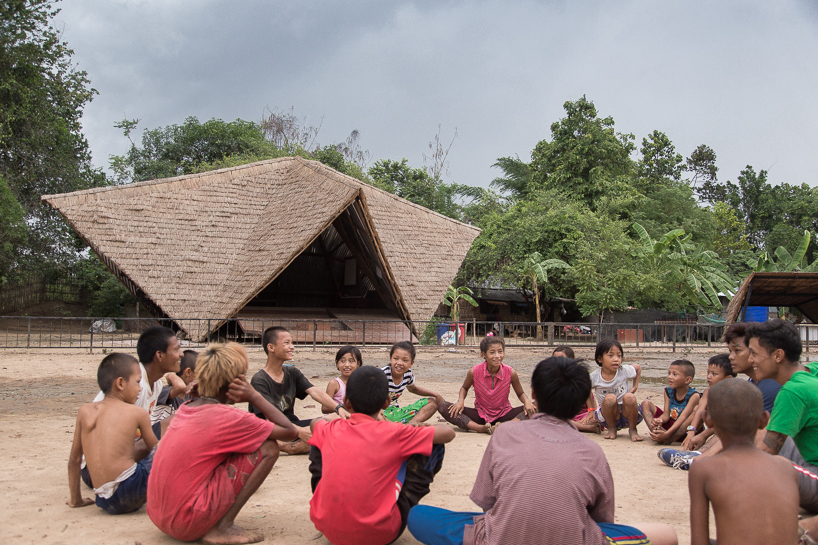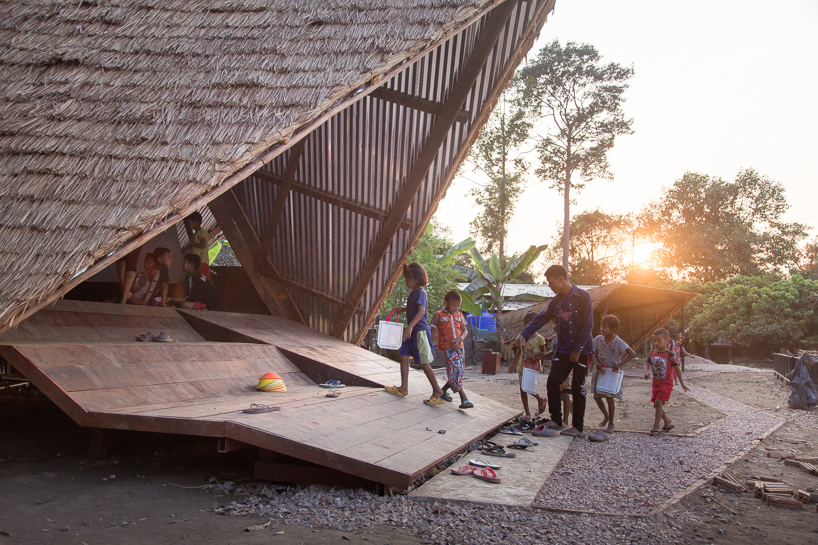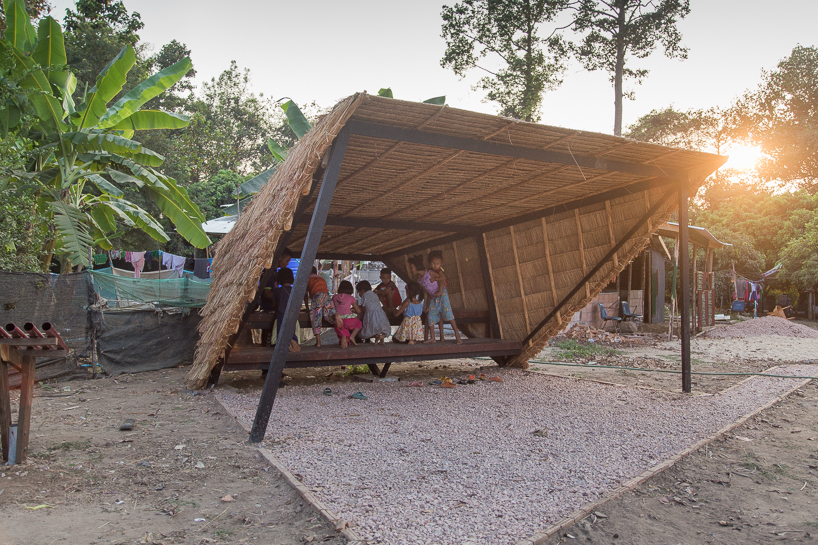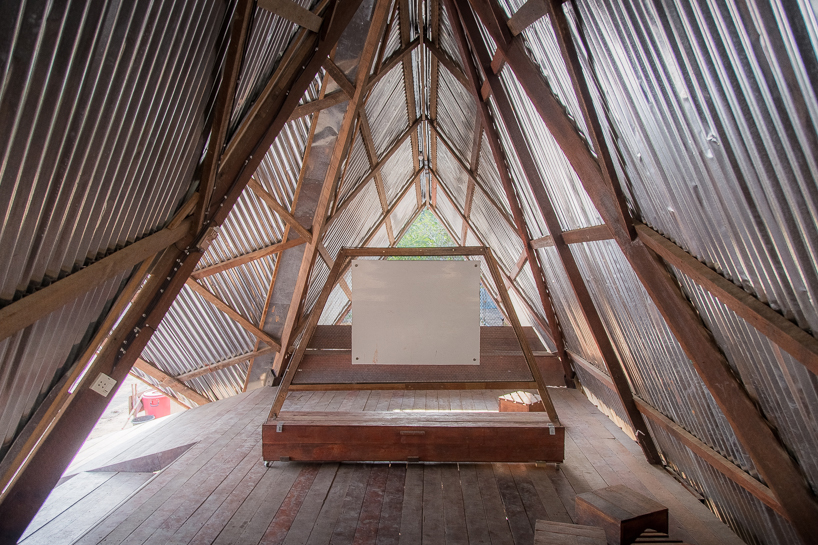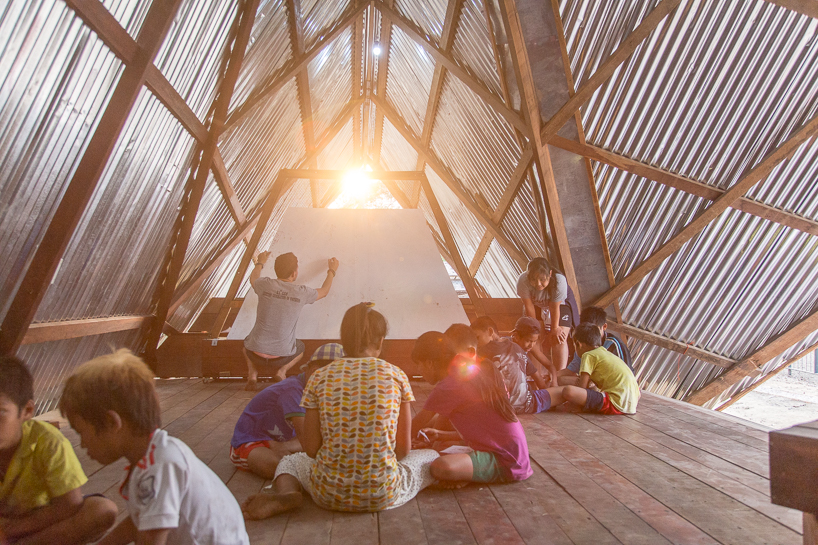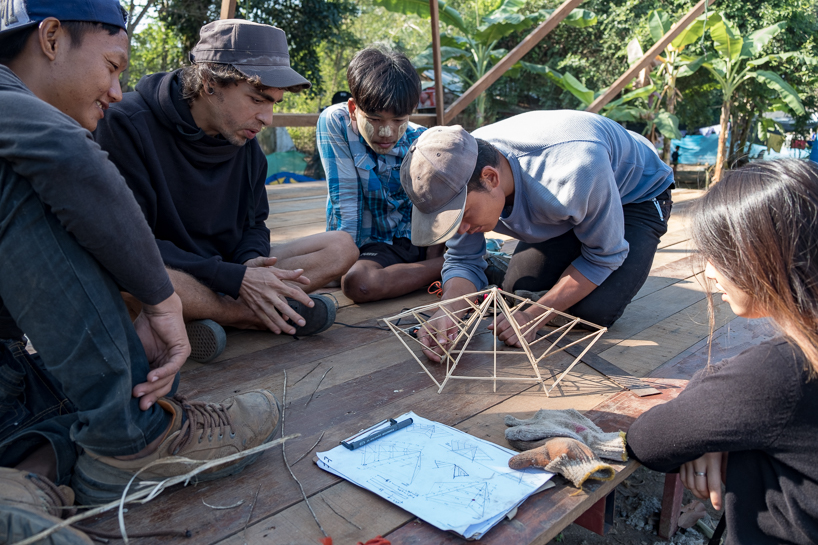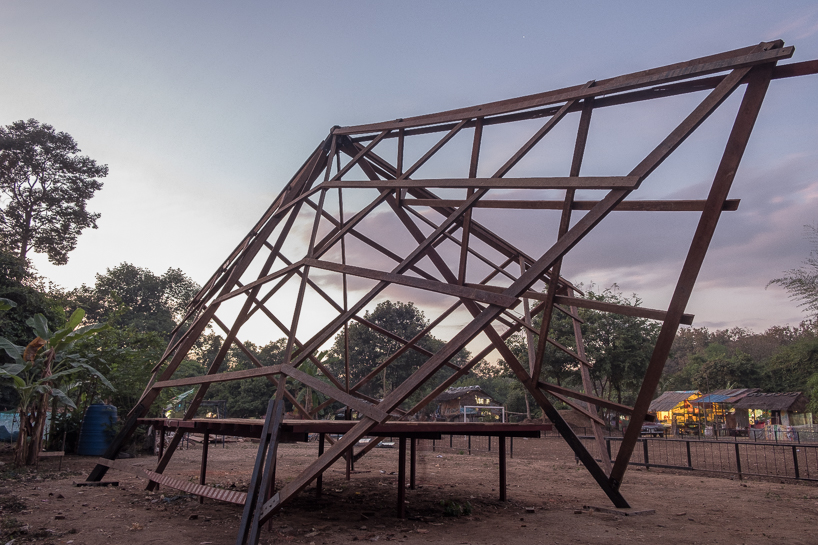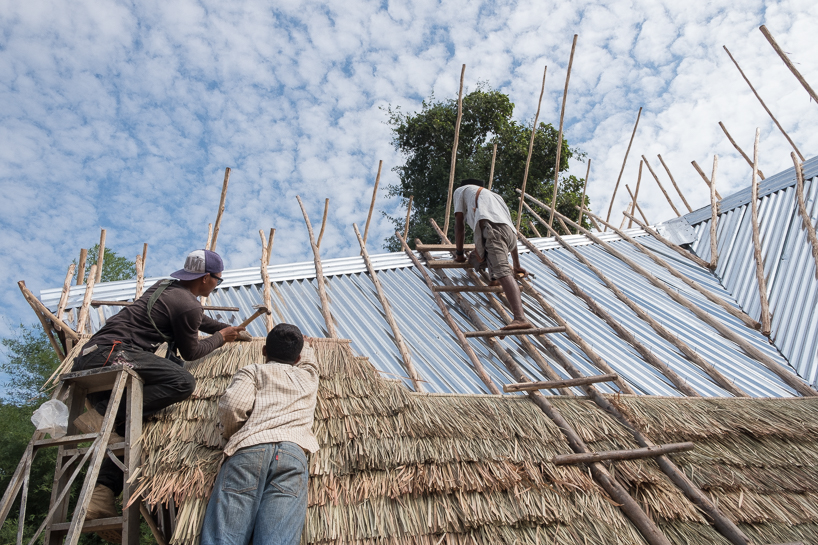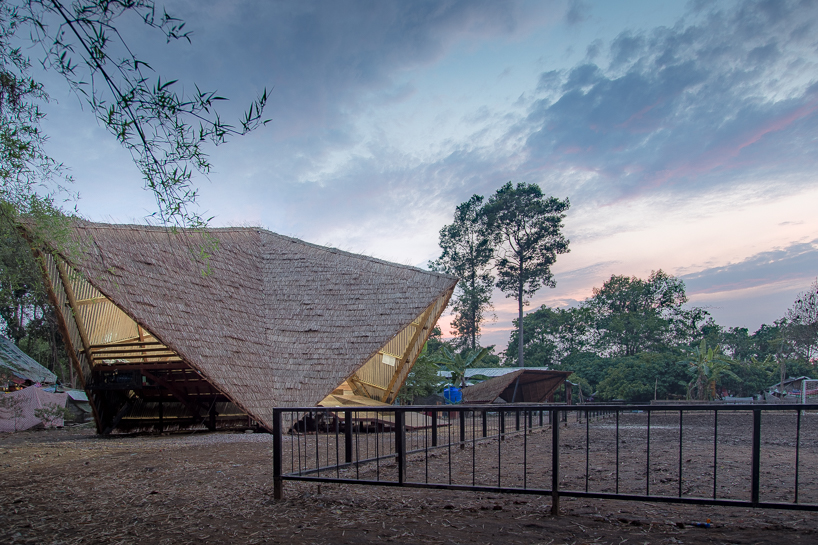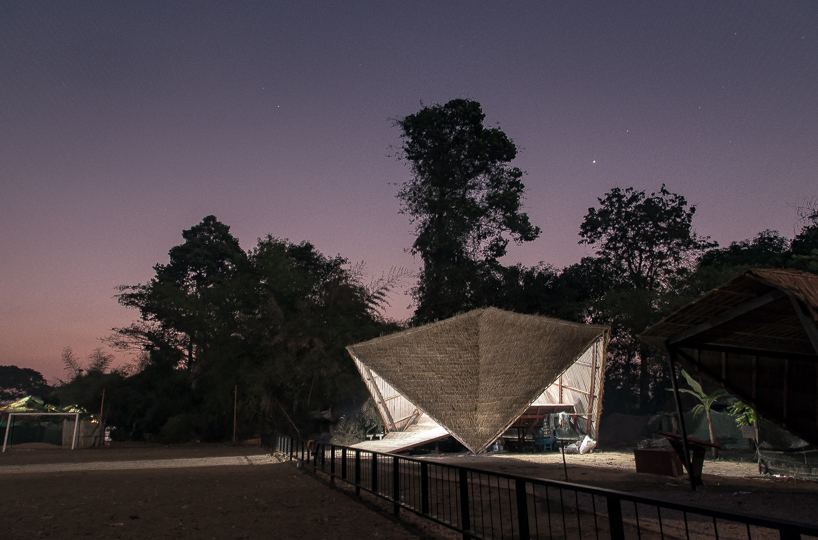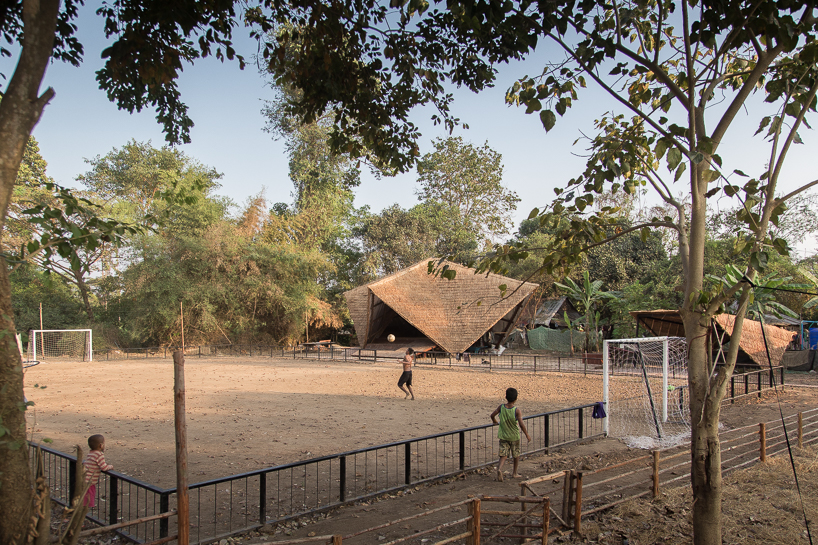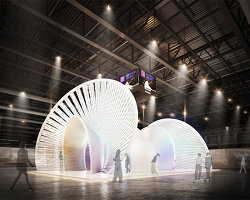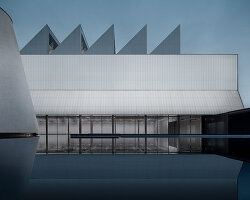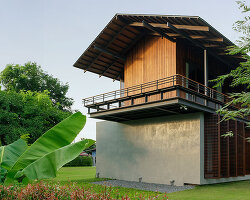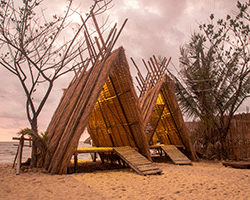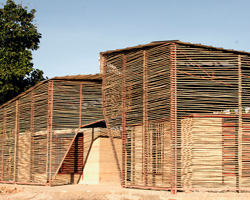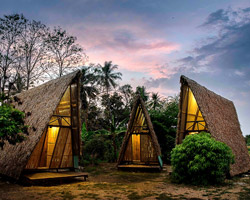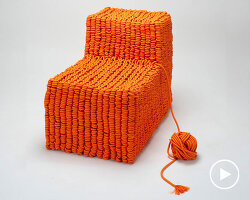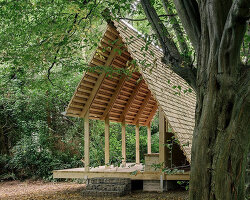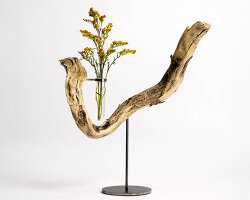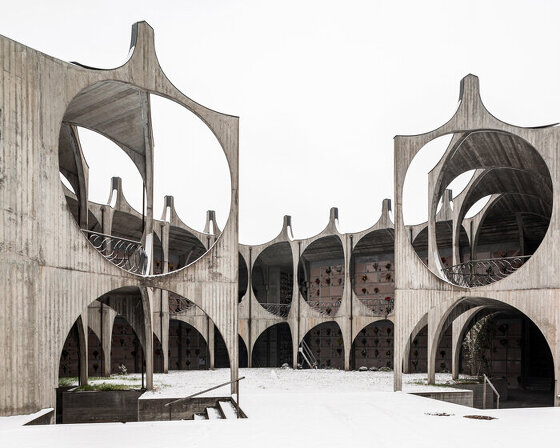for their latest project, estudio cavernas has designed and constructed a community center for burmese migrants in mae sot, thailand. dubbed the ‘green island’, the new intervention lies on an area of green, situated in the heart of a municipal waste center that is home to 400 migrants. focusing on sustainable construction techniques and developing the community, the project provides a space where children can learn and play together.
since its construction, twenty families have built their homes around the green island, reinforcing the original concept of local ownership and belonging
all images courtesy of estudio cavernas
for two years, estudio cavernas has trained members of the community, utilizing a holistic approach to capacity development in which workers are trained in sustainable construction techniques and sourcing local materials. after being awarded a grant to develop infrastructure within the waste centre, the team, in partnership with playonside, an organisation focused on youth empowerment and gender equality through sports, set out to build a multipurpose space based on the needs identified by the community themselves.
students can transition seamlessly into outdoor recreational spaces via an access ramp which acts as a gathering space for children to congregate and rest between learning and sports activities
located at the core of the settlement, the ‘green island’ provides a centrally located, easily accessible, and safe space where children can learn and play together. premised on the formative power of physical space, the project is designed to create multiple opportunities to fulfil children’s social, physical and cognitive needs. at the focal point of the island is a community centre that doubles as a classroom.
adjacent to the community centre is a football field lined with bleachers
the typology of the centre is based on an open learning environment. varying degrees of enclosure are incorporated to support different learning conditions. flexible open spaces allow for greater scope for movement and encourage interaction, collaboration, and creativity. when needed, the main interior area can be divided by the use of a mobile partition, a bookshelf with an attached whiteboard, allowing the space to be used simultaneously by different groups for multiple purposes.
the main interior area can be divided by the use of a mobile partition
given the extreme weather conditions in the area, the southwest face of the center is surrounded by protective teak trees which shield it from rain and sun. prone to heavy rainfall during monsoon season, the building is elevated to avoid water damage to the structure. double steel profiles anchored to light foundations raise the timber frames from the ground. the low inclined roof protects the building from heavy rainfall yet the large opening on three sides the building provides cross ventilation and natural light.
flexible open spaces allow for greater scope for movement and encourage interaction, collaboration, and creativity
in order to mitigate flooding, a low-cost french drainage system has been constructed. reclaimed timber is used for the structure and flooring and locally assembled sugarcane thatch is used for the roof. an inner layer of aluzinc is added underneath the thatch with a middle layer of vertically placed eucalyptus to create an air chamber to avoid excessive radiation from the roof.
for two years, estudio cavernas has trained members of this community, utilizing a holistic approach in which workers are trained in sustainable construction techniques
adjacent to the community center is a football field lined with bleachers. students can transition seamlessly into outdoor recreational spaces via an access ramp which acts as a gathering space for children to congregate and rest between learning and sports activities. sports equipment is stored under the side platforms which can be accessed from the ground.
double steel profiles anchored to light foundations raise the timber frames from the ground – reclaimed timber is used for the structure and flooring
incorporated throughout the outdoor area are different learning units including musical instruments, climbing apparatus and a food garden to encourage learning everywhere. the food garden, an enclosed area hosting vegetable and fruit trees, not only provides fresh produce for the community, but also serves as an open classroom where children are taught the basic principles of permaculture.
locally assembled sugarcane thatch and an inner layer of aluzinc, separated with eucalyptus profiles conform for the roof
since its construction, twenty families have built their homes around the green island reinforcing the original concept of local ownership and belonging. the green island has taken on a symbolic meaning for the community who are united through a central space that represents the community’s identity and shared vision for their own development.
premised on the formative power of physical space, the green island is designed to create multiple opportunities to fulfil children’s social, physical and cognitive needs
given the extreme weather conditions in the area, the southwest face of the centre is surrounded by protective teak trees which shield it from rain and sun
at the heart of a municipal waste centre, home to 400 burmese migrants, lies an island of green and a site where space, power and identity collide
located at the core of the settlement, the ‘green island’ provides a centrally located, easily accessible, and safe space where children can learn and play together
project info:
project name: the ‘green island’
location: mae sot, thailand
architect: estudio cavernas
designboom has received this project from our ‘DIY submissions‘ feature, where we welcome our readers to submit their own work for publication. see more project submissions from our readers here.
edited by: lynne myers | designboom
